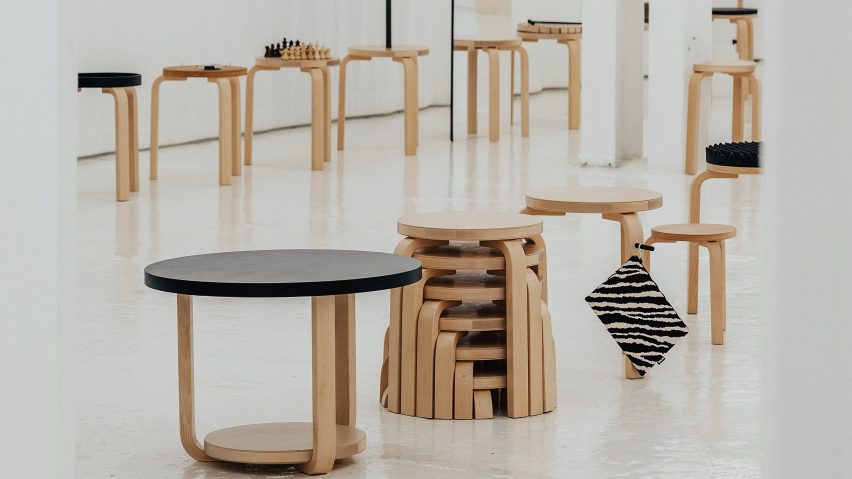
Daisuke Motogi reimagines Alvar Aalto's iconic Stool 60 a hundred times over
Architect Daisuke Motogi is presenting his Hackability of the Stool exhibition featuring one hundred alternative ideas for Finnish designer Alvar Aalto's Stool 60 as part of London Design Festival.
The exhibition marks 90 years of the three-legged Stool 60, a flat-packed timber furniture piece conceived by Aalto in 1933, which has since become a design classic.
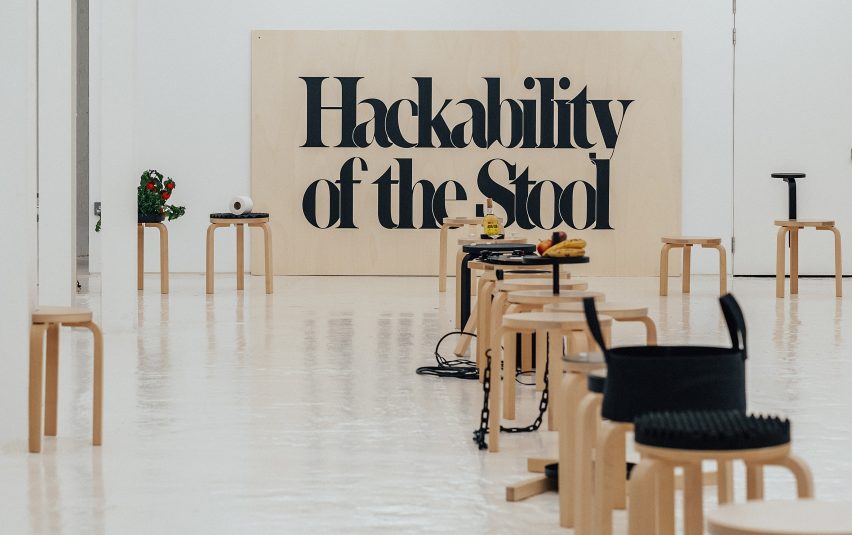
Japanese architect Motogi created one hundred different versions of the stool, including a chessboard and a loo roll holder.
The alternative furniture was arranged across the white-walled basement of furniture brand Vitra's showroom and accompanied by pinned-up sketches.
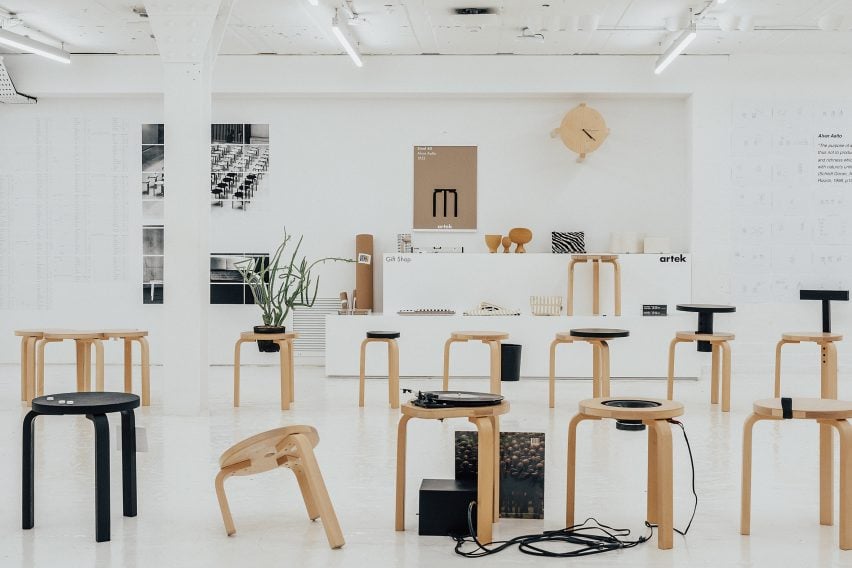
"A masterpiece of modernist design, Stool 60 was the perfect choice as being made from wood, it is easy to modify, and being stackable, it is easy to store," said Artek, the furniture brand Aalto co-founded with his wife Aino in 1935 and which is now owned by Vitra.
"The stool is also easy to disassemble and reassemble, and it can be flat-packed for efficient transportation," added the brand.
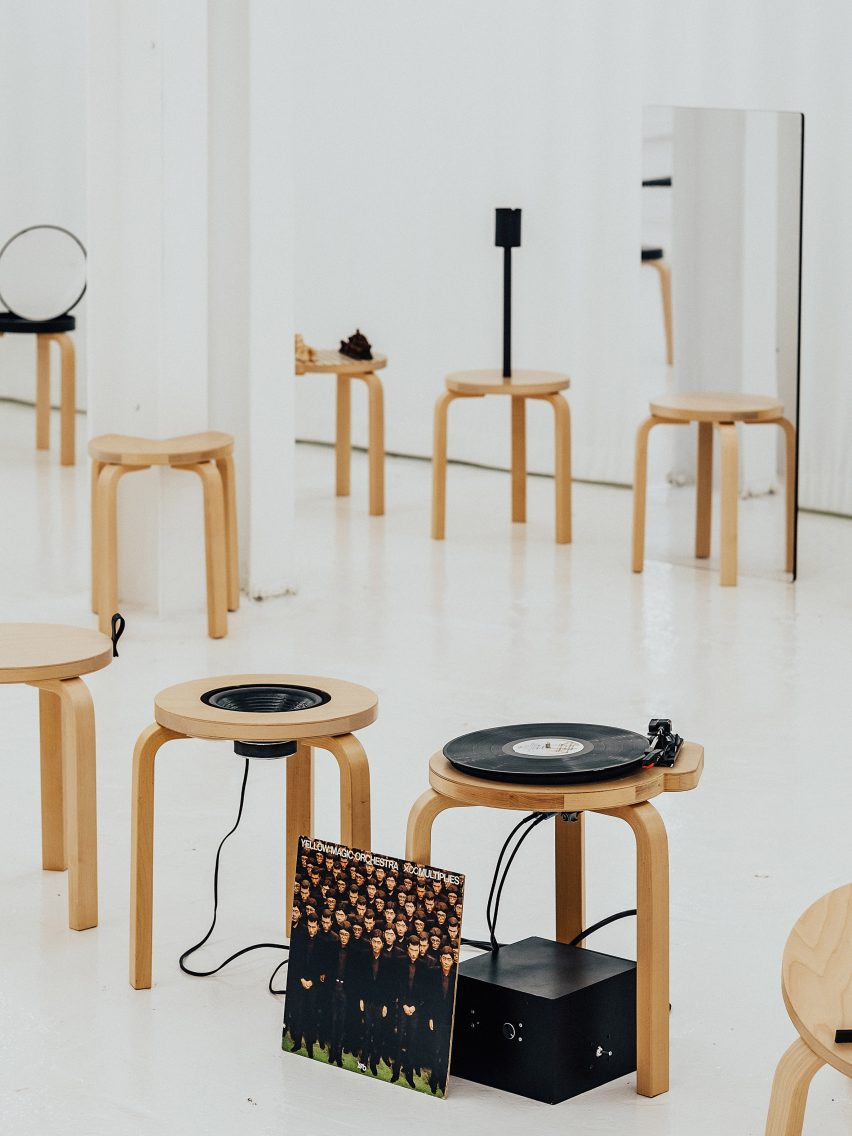
Pieces on display range from the practical to the more outlandish. There is a makeshift bar, complete with notches for wine glasses, and a spider-like stool that has been turned upside down and given added legs.
A playful pinboard, a stool fitted with two miniature spirit levels and a drying rack for dishes all feature in the show.
Motogi and his team at DDAA Lab also took advantage of the furniture piece's round seat to create a functioning vinyl record player. For another model, they removed the seat entirely, leaving a plastic-lined hole that now functions as a wastepaper bin.
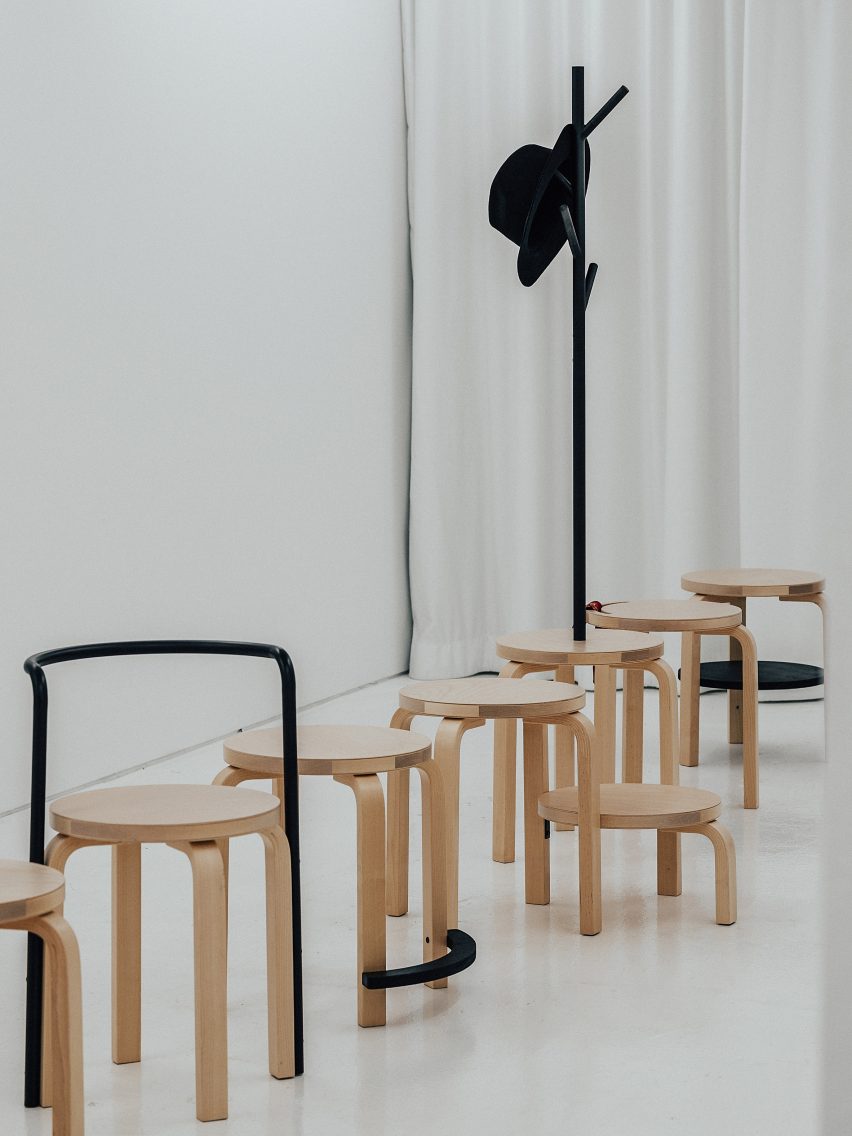
While the pieces transform Stool 60 from its original design, visitors can also find nods to the Aaltos' distinctive style.
For example, a zebra-print pouch hangs from one of the stools – a pattern frequently used by Aino in her Artek projects after she discovered the Otti Berger-designed fabric during the 1930s while travelling in Europe.
The Hackability of the Stool project emerged after Motogi and his creative lab were invited to provide 150 stools for visitors attending a large event.
Instead, the designers hosted a workshop where participants were encouraged to discuss what a stool is and highlight its functions.
Various suggestions for stool designs that were proposed at the workshop became the alternative furniture pieces that form the current project.
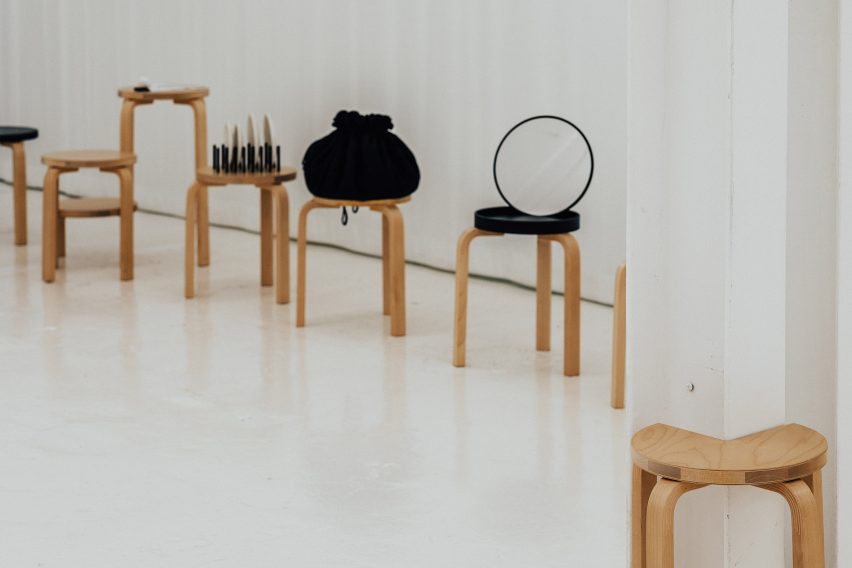
Previously presented at Milan design week in April, the project was originally initiated in 2019.
London Design Festival is taking place in the capital until 24 September. Other highlights from the event include a handbag made of bacterial leather by fashion brand Ganni and amorphous ceramic sculptures by Abid Javed that take cues from the shape of cells.
The photography is by Taran Wilkhu.
Hackability of the Stool is on show at Vitra Tramshed in Shoreditch as part of London Design Festival 2023 from 18 September to 6 October 2023. See our London Design Festival 2023 guide on Dezeen Events Guide for information about the many other exhibitions, installations and talks taking place throughout the week.